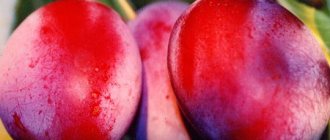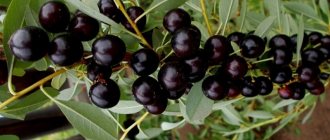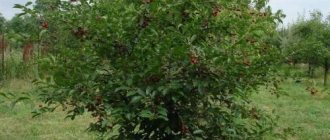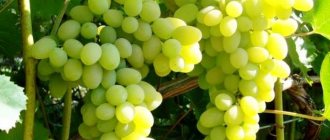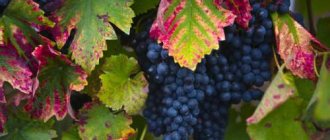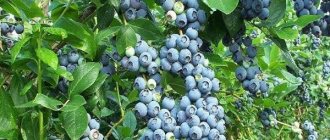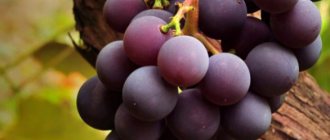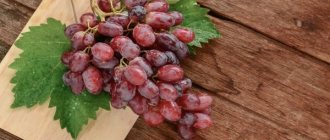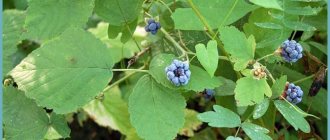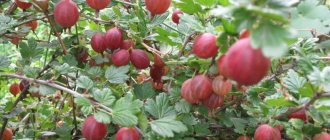The cherry tree is beautiful: snow-white in spring bloom, as if strewn with rubies in summer, it always attracts the eye. This is not to mention how useful this berry is. That is why the culture has received such recognition from gardeners. But it is of particular importance in regions that are poorly suited for fruit crops. Today we will talk about cherry varieties for the Leningrad region. Today they are cultivated in almost all areas, amateur and industrial, despite the fact that winter temperatures here often reach critical levels. Beautiful fruits bring incomparable health benefits, so everyone strives to stock up on berries for future use.
Features of gardening in the northwest
Cherry is originally a southern crop. Therefore, in order for it to please the eye and produce a sufficient amount of tasty berries, it is necessary to use varieties of local selection, zoned, that is, adapted to local conditions. Then you can grow a cherry tree on your plot without any problems. Critical changes, which are typical for the local winter, can be disastrous for any fruit tree, which is why breeders are developing new varieties of cherries for the Leningrad region. However, local gardeners know that they not only need to choose the right variety, but also follow some rules.
How to plant correctly
In order for the tree to develop and the fruits to ripen, it must be placed in an area where the heat-loving crop will be comfortable.
Selecting a location
Sweet cherries require light and bear fruit well if grown in the sun. When placing a seedling, you need to ensure that shadows from other trees do not fall on it. For a heat-loving crop, it is advisable to choose a place on a southern slope, closed from northern winds. The fruit plant does not take root in lowlands, swampy areas where cold air accumulates.
Bad neighbors
It is better to plant cherries, even of a self-fertile variety, next to the same stone fruit crop as itself.
Apple tree
Many summer residents place plants on the site without taking into account compatibility. The leaves of trees and shrubs release components that can deplete the soil and change its composition. The apple tree takes away nutrients and moisture from the cherry, preventing it from growing and developing.
Why does a cow have cloudy eyes? Causes and treatment of eyesores
Pear
Stone fruits should not be placed near fruit trees whose roots secrete a large number of compounds. They do not get along well with pear trees.
Plum
The cherry develops normally, grows and bears fruit in the vicinity of the cherry, which acts as a pollinator, and with rowan; a lot of berries are laid and everything ripens. It is not recommended to plant plums together with southern crops, which have a weaker root system.
Digging a hole
Sweet cherries love loose soil and do not survive in areas where water comes close to the surface. The pit for the tree should stand for a month or 3 weeks. If planting is done in the spring, in the fall you need to dig a hole to a depth of 60 cm and a diameter of about a meter. Fertile soil is combined with 2 buckets of humus, 60–80 g of potassium salt and superphosphate are added. The pit is filled 2/3 with the mixture and watered.
Landing
Cherries are placed at a distance of 5 meters from fruit crops. The leaves of the tree are torn off, the roots are lowered into water for about 6 hours. A small mound is made at the bottom of the hole, a seedling is placed vertically on it, and soil is sprinkled on top. The soil is compacted and watered abundantly. The tree trunk circle is covered with mulch.
Transportation
Seedlings must be purchased from a nursery or nature reserve. Sweet cherries are grafted onto Vladimir cherries or other varieties that are not afraid of the cold. A tree a year or two old takes root well. For transportation over long distances, the roots are wrapped in wet newspapers in 3-4 layers, packed in plastic film or simply covered with sphagnum moss.
For the tree to grow
The best time to plant in this region is spring, before the buds open. You must choose a well-lit place, this is a prerequisite. In addition, in order to count on a good result, it is necessary to choose neutral or, in extreme cases, slightly acidic soils. If your site is dominated by acidic, peaty areas, then you need to be well prepared for planting. To do this, dig a large hole and fill it with purchased earthen mixture. A young cherry tree is planted in the middle of this hole. Do not forget that you need to choose only self-pollinating cherry varieties for the Leningrad region. In addition, in order for your plantings to safely withstand the cold, varieties should be taken only with excellent winter hardiness.
Lyubskaya
It is resistant to cold, like other varieties suitable for the Leningrad region. Does not require abundant watering and can withstand drought. Excellent self-fertile characteristics allow for large harvests even without the presence of pollinators. Weak immunity to fungus.
It bears fruit for the first time at 2–3 years of age. Ripening occurs in early August.
Berries up to 4 g, tasty, rich burgundy color. Scarlet juice. Due to its transportability, the variety is suitable for commercial cultivation.
The early flowering inherent to the variety can become a problem: if return frosts occur in the spring, this affects the harvest. Planting cherries is recommended on light or medium loamy soils.
Felt cherry - a favorite of Leningraders
Gardeners often make the same mistake - they graft felt cherry onto ordinary rootstock. This is absolutely wrong, despite the similarity of the fruits, they are not genetic relatives. Therefore, it is better to buy ready-made seedlings and plant them in your garden, especially since, thanks to its excellent biological and economic qualities, the felt cherry has become a favorite of local gardeners. Today there are a wide variety of varieties for the Leningrad region; we will list only the most popular of them.
The best varieties of felt cherries
- The very first one worth noting is the early variety Delight. The bush is very compact and easy to process, cherries weighing about 3 g, sweet and sour. The bushes are very productive; each one can harvest up to 9 kg of berries.
- An excellent variety is Tsarevna; each tree bears up to 10 kg of large berries. The bush itself is medium dense, low-growing and quite wide; you need to calculate the planting density.
- Now the most winter-hardy felt cherry will be presented. The varieties for the Leningrad region all have this quality in one way or another, but Okeanskaya Virovskaya is superior to the rest. At the same time, the yield is high, about 9 kg per tree.
- If you are concerned about the lack of space on your site, then you can opt for a very compact variety called Vostochnaya. Productivity is about 9 kg.
- Additionally, it is worth noting other cherry varieties for the Leningrad region, these are Alisa and Natalie, Skazka, Smuglyanka Vostochnaya, Triana. What is the main advantage of these varieties? Many gardeners choose them not only for the special sweetness of the berries, but also for their compact crown. The low-growing, bushy felt cherry seems to have been created for local winters. Varieties for the Leningrad region (photos show only a few of them) were bred specifically for harsh weather conditions.
White
| Mid-late self-fertile variety, ripens by the end of July. The berries are small (up to 2 g). The height of the bush is medium-sized (up to 1.5 m in height). Productivity – medium-yielding (up to 8 kg per bush). |
Resistant to moniliosis, clasterosporiosis and mycosis. Increased winter hardiness, high demands on lighting (in the shade the branches become very elongated, fruiting worsens).
The bush is round, compact, with a spreading “through” crown. The shoots are brown, pubescent. The leaves are medium-sized, elongated-ovate, slightly corrugated, with tomentose pubescence. Flowering is very decorative and occurs in the third decade of May. The flowers are white, small in size.
The berries are white, with a pearlescent sheen (less often with a creamy tint), slightly pubescent, round in shape. The pulp is very juicy, fibrous, matte white, sourish-sweet, the skin is thin with slight pubescence. The bone does not come off. The fruits are firmly attached to the stalk, which explains the disadvantage of the variety - wet tearing. Suitable for fresh consumption and canning. It is interesting that the white color of the fruit is preserved even during seed propagation (usually seedlings lose the properties inherent in the variety).
Choosing a variety for your summer cottage
The variety on the market can really make it difficult to make the right choice, as the gardener will simply get confused in the vivid descriptions. Therefore, let's highlight the main criteria that will allow us to determine which cherry varieties are best suited for the Leningrad region. First of all, you need to pay attention to the timing of ripening. Early-ripening varieties will delight you with berries in the first half of July, mid-ripening varieties will produce the main harvest in the second half of July, and late-ripening varieties - in August. By choosing different varieties, you will provide yourself with a harvest of fresh cherries for almost the entire summer.
Second point: pay attention to such characteristics as disease resistance, large fruit, and productivity. If the characteristics of a variety cost less than 7 kg per tree, then this is not the one you should pay attention to. Finally, the best cherry varieties for the Leningrad region should be winter-hardy, preferably self-fertile, then your harvest will not depend on the weather and insect activity. We will introduce you to five new varieties that are optimal for these climatic conditions.
Care instructions
Based on the practice of experienced gardeners, the following recommendations can be distinguished:
- after planting a seedling, do not fertilize the soil for 2 years, but only loosen the soil, water in dry weather and pull out weeds;
- at the beginning of autumn, it is necessary to carefully dig up the soil under the cherries and carry out water-replenishing irrigation to prepare for winter;
- be sure to mulch the soil in the tree trunk circle to retain moisture;
- Water fruit-bearing trees abundantly during the growing season, flowering and at the time of fruit ripening;
- Lime the soil every five years to maintain acidity at a low level;
- periodically (during the growing season and when digging in the fall) apply the necessary mineral and organic fertilizers;
- in the spring, before the buds open, prune damaged, weak and disease-affected branches;
- constantly cut out emerging root shoots;
It is imperative to rejuvenate plants after (7-8) years by cutting out old branches
It is imperative to rejuvenate plants after (7-8) years by cutting out old branches, replacing them with strong root shoots. This will extend the life of the tree.
Memory of Enikeev
We continue to consider cherry varieties for the Leningrad region. Reviews suggest that Pamyat Enikeev cherry is one of the most popular and productive. It was obtained by crossing old varieties Zhukovka and Korinka. The variety appeared at the All-Russian Selection and Technological Institute of Horticulture. The harvest ripens early, and the trees demonstrate excellent winter hardiness. The variety is self-fertile, universal. A tree of medium height, very convenient for harvesting. The fruits are large, dark red, sweet with a pleasant sourness.
Rastorguevskaya cherry
This is a mid-season variety, very productive, resistant to many diseases. Many gardeners love it for the peculiarity of its crown; it is spreading, that is, in general, a bush cherry. Varieties for the Leningrad region must be chosen very carefully, because even the zoned Rastorguevskaya cherry is prone to freezing, but the trees recover very quickly and manage to produce a good harvest. The fruits are medium-sized, dark red, the taste is very good, sweet and sour.
Dessert Volga
Cherry of the Dessert Volga variety is valued for its good winter hardiness: like felt cherries, it is suitable for growing in cold climates.
Tree up to 3 m with a slightly thickened crown. Partially self-fertile, Vladimirskaya, Rastunya, Finaevskaya are planted nearby for pollination. Grafted trees bear fruit from 2–3 years, self-rooted trees – from 3–4 years. Very productive: proper care of cherries will bring up to 12 kg of berries from an adult plant.
The berries weigh 3.2 g, glossy, burgundy, ripen in mid-July. The pulp is pinkish-red in color and juicy. The juice is red. The berries are easily removed from the stalk, but they themselves hardly fall off.
Variety Rusinka
When choosing excellent winter-hardy cherry varieties for the Leningrad region, do not forget about this wonderful representative of its species. One of the best varieties for the northern region, it winters well in the harshest weather conditions, and has amazing resistance to all pathogens. The tree does not tend to “rest” and bears fruit annually. The variety is self-fertile, another amazing feature is the amazing rooting of cuttings, that is, there will be no problems with growing a garden. The tree is below average size, the fruit will be collected without the help of a ladder, the crown is spherical and spreading. The fruits are medium in size, the flesh is dark, the taste is good.
Variety Sania
We have presented to your attention excellent varieties of cherries for the Leningrad region. Photos demonstrate their high decorativeness and productivity, and reviews from gardeners confirm that each of them lives up to the trust and provides berries every year. Today we complete the review by considering one more variety. Sania is a mid-ripening cherry with high yield. Partially self-fertile and versatile. It should be noted the high growth rate of the tree, the crown is spherical, the fruits are quite large, with red flesh. The variety tests carried out confirm the possibility of its use in harsh climatic conditions, even if the air temperature can reach critical levels in winter. This makes the variety very valuable for gardeners in the Leningrad region. Moreover, no shortcomings were found in him.
This concludes our conversation about cherry varieties for the Leningrad region, although the achievements of modern breeding can be discussed for a very long time.
